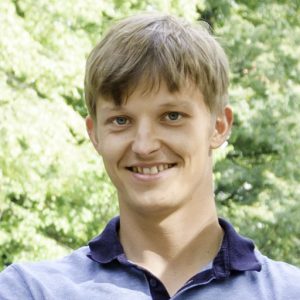 Jiří Matas is a full professor at the Center for Machine Perception, Czech Technical University in Prague. He holds a PhD degree from the University of Surrey, UK (1995). He has published more than 200 papers in refereed journals and conferences. Google Scholar reports about 22 000 citations to his work and an h-index 53.
Jiří Matas is a full professor at the Center for Machine Perception, Czech Technical University in Prague. He holds a PhD degree from the University of Surrey, UK (1995). He has published more than 200 papers in refereed journals and conferences. Google Scholar reports about 22 000 citations to his work and an h-index 53.
He received the best paper prize at the International Conference on Document Analysis and Recognition in 2015, the Scandinavian Conference on Image Analysis 2013, Image and Vision Computing New Zealand Conference 2013, the Asian Conference on Computer Vision 2007, and at British Machine Vision Conferences in 2002 and 2005. His students received a number of awards, e.g. Best Student paper at ICDAR 2013, Google Fellowship 2013, and various “Best Thesis” prizes.
J. Matas is on the editorial board of IJCV and was the Associate Editor-in-Chief of IEEE T. PAMI. He is a member of the ERC Computer Science and Informatics panel. He has served in various roles at major international conferences, e.g. ICCV, CVPR, ICPR, NIPS, ECCV, co-chairing ECCV 2004 and CVPR 2007. He is a program co-chair for ECCV 2016.
His research interests include object recognition, text localization and recognition, image retrieval, tracking, sequential pattern recognition, invariant feature detection, and Hough Transform and RANSAC-type optimization. His talk takes place on Thursday, March 2nd, at 1pm in room E105.
Tracking with Discriminative Correlation Filters
Visual tracking is a core video processing problem with many applications, e.g. in surveillance, autonomous driving, sport analysis, augmented reality, film post-production and medical imaging.
In the talk, tracking methods based on Discriminative Correlation Filters (DCF) will be presented. DCF-based trackers are currently the top performers on most commonly used tracking benchmarks. Starting from the oldest and simplest versions of DCF trackers like MOSSE, we will progress to kernel-based and multi-channel variants including those exploiting CNN features. Finally, the Discriminative Correlation Filter with Channel and Spatial Reliability will be introduced.
Time permitting, I will briefly introduce a problem that has been so far largely ignored by the computer vision community – tracking of blurred, fast moving objects.
